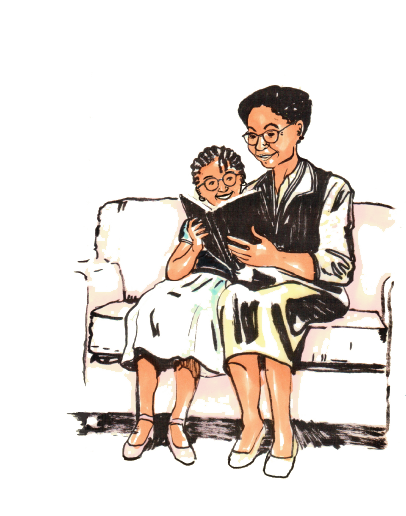Older and Wiser
Retirees are an untapped resource. If you can attract them to volunteer positions, it will benefit your schools and provide them meaning and connection.
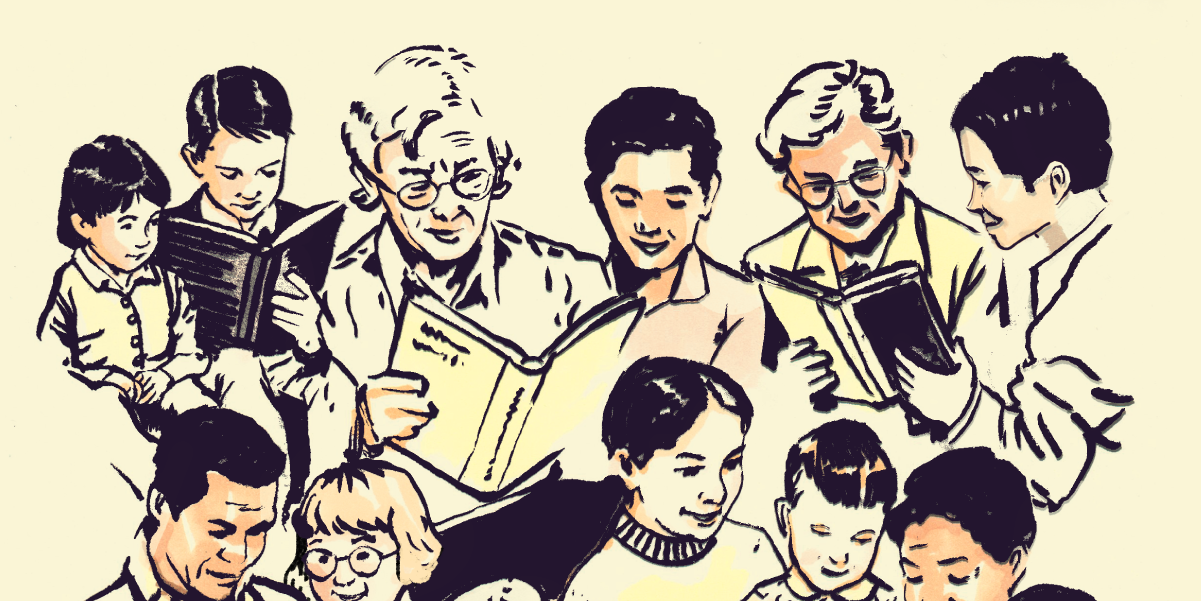
Older & Wiser
How Retirees Can Contribute to Student Success
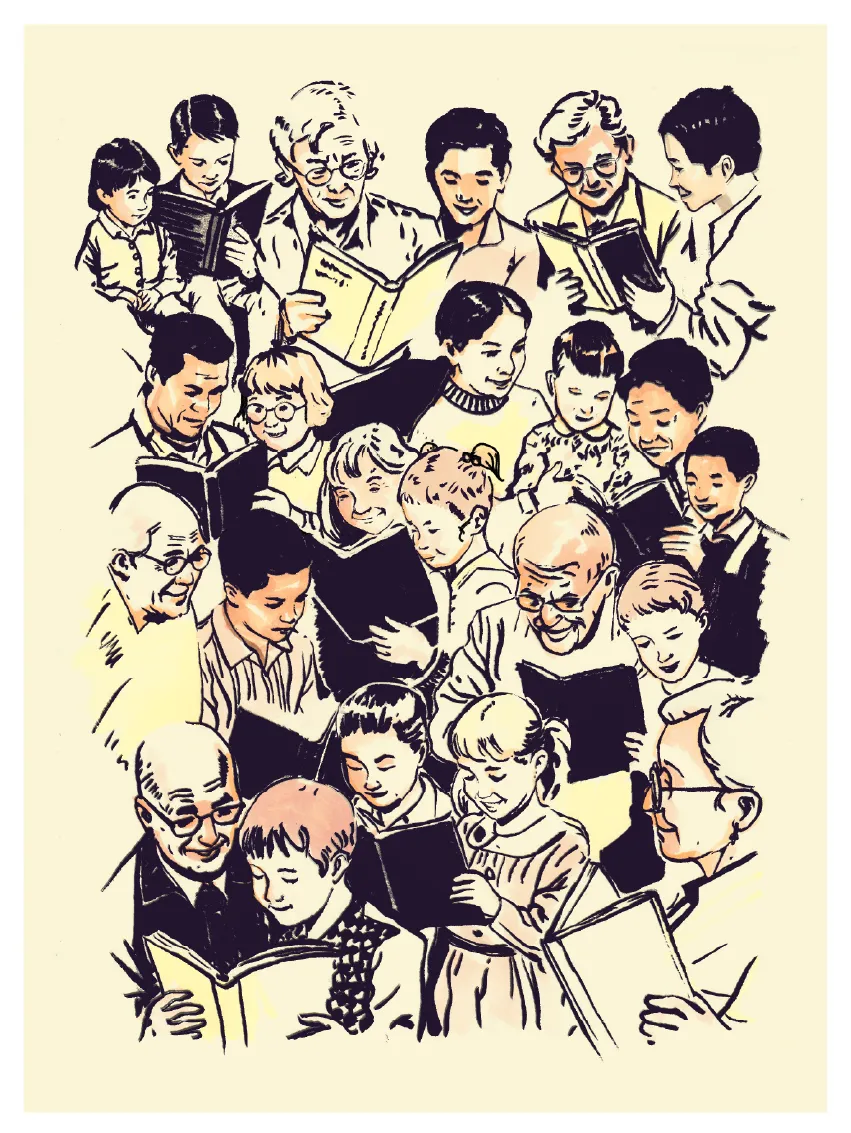
I n 1991, a pioneering preschool in West Seattle opened inside an assisted living facility for older adults. The thought process behind establishing Mount St. Vincent Intergenerational Learning Center was simple: Give children more personal attention and make older adults feel needed and important. Similar programs have popped up around the world, which got us thinking about the relationship between K-12 schools and retired adults. Retirees are an untapped resource and, well, schools can always use more resources.
And because they make up such a sizable portion of the voting population, you really need older adults’ support for bond initiatives. If you can attract retirees to volunteer positions and enfold them into your school community, you can give them meaning and connection while also gaining “Yes” votes. So let’s take a look at the mutual benefits of engaging retirees in your community. Then we’ll share a few quick tips on how to get them more involved.
Intergenerational learning benefits students.
We know schools want what’s best for their students, so how can retirees help?
Closing the Literacy Gap
Reading competency is a crucial component of young people’s language development, not to mention social and emotional development. Research has shown literacy in first through fourth grades has a huge impact on a child’s lifelong success. But since the pandemic, childhood literacy rates have suffered—and the communities that need the most support have seen the greatest decline. According to the National Literacy Institute, almost 70% of fourth graders from low-income families could not read at a basic level in 2023.
While schools are doing their absolute best to address the literacy gap, many are understaffed and their teachers are overwhelmed—making it extremely difficult to give struggling children the individual attention they need. But if you look around, you might find a cadre of older adults ready and willing to help. Some are retired educators themselves who may be able to provide higher-level learning assistance, while others can offer the kind of lived experiences that will enrich a student’s education.
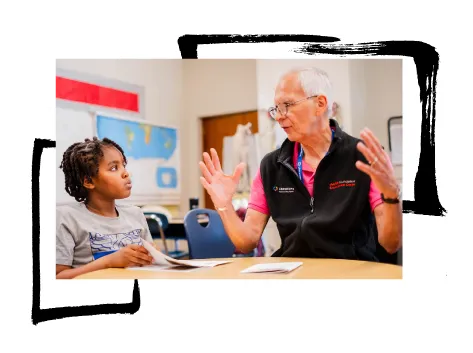
Wes Enicks is the executive director of Literations, a nonprofit affiliate of the AARP Foundation Experience Corps. The Corps pairs adults over 50 with first through fourth grade students to improve their reading skills. “A teacher who has 25 kids in their classroom doesn’t have the time to hear every single student read individually every day,” he explains. “That’s really where our volunteer literacy coaches come in.”
Literations partners with school districts, elementary schools and after-school programs in the greater Boston area using learning models and resources provided by Experience Corps. Enicks lists multiple reasons why the organization taps older adults specifically to volunteer. First, they tend to have more time. “Our program is during the school day, twice weekly, a minimum of four to six hours per week,” he says. “That is not something that a corporate volunteer or college student could commit to.”
He also sees a special bond between elementary school students and older adults. “I think that for a lot of our kids, there’s an instant connection there because a lot of them have strong familial relationships with their grandparents,” Enicks says. That familiarity helps put many students at ease. And Enicks has noticed that his volunteers tend to have more patience when students are really struggling, likely because older adults have had plenty of experience dealing with difficult situations in their time.
The program has been a success—on average, students who are tutored by Literations’ volunteer literacy coaches end their school year reading 1.5 grade levels higher than they began. But according to Enicks, students aren’t the only ones who benefit; the volunteers do, too. “Oftentimes when they retire or maybe their kids are grown, these volunteers are looking for something to engage in that they feel passionate about and that feels like they’re making a difference,” Enicks says. “Older adults who feel like they lack purpose often find it in helping these children read.”
Living History
Eurocentric history curricula tend to gloss over the experiences of non-white figures—and while representation is slowly improving, there are still many cultures whose stories aren’t being adequately told. Inviting volunteers with diverse cultural backgrounds can help fill in some of those gaps in perspective. For instance, hearing about Japanese internment from someone who experienced it firsthand would be a rich and meaningful addition to lessons about World War II and its aftermath—especially for young Japanese-Americans.
As a former public school principal, Cherokee Nation Chief of Staff Dr. Corey Bunch knows this all too well. “Sometimes things are left out. I would say the same for other cultures, not just Cherokee,” he says. In Cherokee Nation, there are fewer than 2,000 people who speak Cherokee as their first language, the majority of whom are over 50. Building relationships between these older adults and younger people is vital to preserving the language—which, according to Bunch, is one and the same as their history. “It’s not just about teaching the language,” he says. “A Cherokee language speaker sees the world through a different lens. It’s about how to see the world like a Cherokee.”
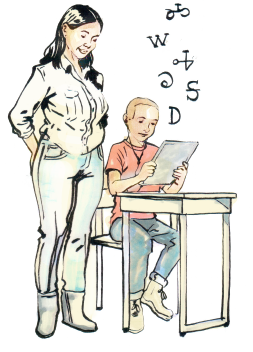
And that valuable perspective is in danger of being lost to time. “All these things are left over from the federal boarding school policy of assimilating natives into European culture. Tribal nations can all point back to that period of time as when we began losing our language and traditional cultures,” Bunch says.
So the tribal government works hard to retell the history of Cherokee people with the help of its older population. “We have a language program that collects recordings of elders to pass down knowledge and share stories. It’s our goal to record everyone who’s alive to capture all of the spoken words,” Bunch says. “That’s something that we can use as a teaching tool for generations to come.”
Cherokee Nation also produces “Osiyo, Voices of the Cherokee People,” a TV series that celebrates their traditions and culture. For example, one episode profiles a Cherokee bowmaker. Indigenous people have been crafting bows and arrows for hundreds of years, but there are only a small number of bowyers left who can teach those skills to a new generation. “I think tribal citizens in general have a deep respect for their elders,” Bunch says. “That’s been ingrained in tribal people since time immemorial—to pass down wisdom and knowledge.”
But perhaps one of Cherokee Nation’s biggest recent endeavors in cultural preservation was the opening of the Durbin Feeling Language Center in 2022. (Its namesake, Durbin Feeling, was a renowned linguist who wrote the Cherokee language dictionary.) The center includes immersion classes, a language apprenticeship program and the government’s translation department. In combination with some language classes, the center offers cultural lessons like traditional Cherokee cooking.
Next to the center, the tribal government has built five efficiency homes for first-language speakers to reside in and engage with students on campus—and they hope to build more villages for first-language speakers in the future. Not only does this provide one more touchpoint between elders and younger members of Cherokee Nation, but it’s also an affordable housing option—an important step toward ensuring the health and happiness of its older population and showing them they are valued.
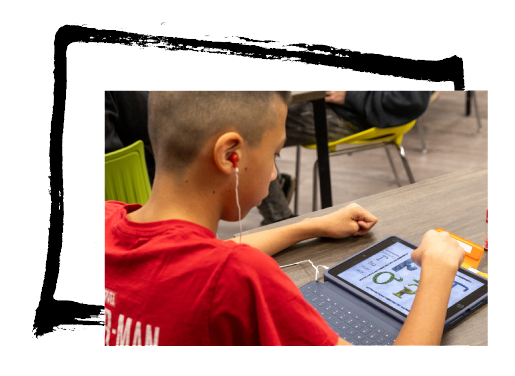
Of course, elders from different cultural backgrounds can help expand any student’s worldview. But for those students whose histories have been underrepresented or erased, representative teachers and mentors can offer lessons they can’t learn from anyone else.
Social Intelligence
As people age, research shows improvement in skills like complex problem-solving and emotional regulation—behavior older adults can model for younger people. A third-party study of Experience Corps found statistically significant improvement in students’ relationship skills, decision-making skills and motivation to succeed after engaging with older volunteers.
Some of those social-emotional gains students make are also a direct result of improved literacy. Successful tutoring in reading comprehension, such as Literations provides, increases student confidence. “I was a kid who struggled with reading due to learning differences, and I know the impact it had on me, not just academically, but also socially and emotionally,” Enicks says. “I didn’t want to read in the classroom because I didn’t want to make mistakes in front of my peers. These older adult volunteers build a trusted space where their students feel comfortable.”
Intergenerational connection also gives students the opportunity to learn how to appropriately socialize with older people who look and act differently than them. Some may have needs and experiences other than their own—such as differently abled people and people in different economic circumstances. Regular interaction with people from all walks of life, especially at an early age, makes children more accepting of others.
Intergenerational learning
benefits older adults, too.
“Many of our volunteers come to Literations because they want to help support the youth in their communities, and what we hear from them time and time again is how much they take away from it,” says Enicks. “There is increased isolation amongst that population, but they become a part of these incredible communities at each of their schools.”
Numerous studies demonstrate a connection between increased social interaction and decreased boredom, loneliness and mental decline for older adults. And according to the American Psychological Association, the mortality risk of diminished social interaction is comparable to that of smoking and alcohol consumption. In less dire terms, getting out there and seeing people is good for you, regardless of your age.
And the cognitive health of older adults also benefits from volunteer service. Continued intellectual challenge in old age means better brain function—and teaching children how to read or make their own bows certainly counts as challenging.
Which leads us to our next point—by its very nature, intergenerational learning goes both ways. For instance, all Literations volunteers receive lessons in technology as part of their training. Plus, today’s tech-savvy children grew up with computers, tablets and smartphones, making them more technologically literate than most people over 35. Whether formally or informally, young people can teach older people hard skills that will be extremely useful to them in an increasingly “online” world.
How can you get retirees involved?
Older adults can be an incredible resource for your schools, and you can be an incredible resource for them as well—but it might take a little strategy.
Make your schools more inviting.
At Lewisville ISD in Texas, the administration has created a discount card for grandparents or other community members who want to attend events. With a free Star Express Card, adults over 60 years old can receive free general admission to games, concerts and plays. Cardholders can also eat lunch in any LISD school cafeteria on school days.
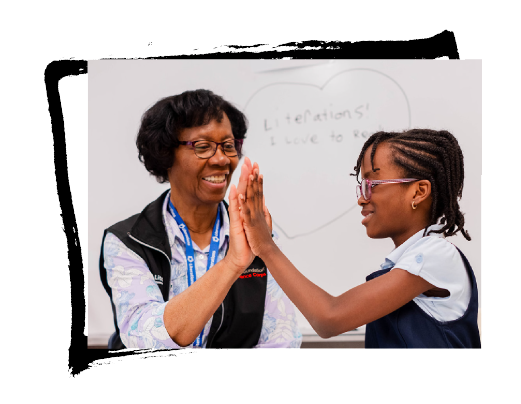
Offering discounts like these is a great way to draw older adults to your campus. And once they have attended a school play—and they’ve gotten to know staff members and feel comfortable in your schools—they’re more likely to return to campus and maybe even volunteer to take tickets at the next play.
Looking for another campus draw? Cherokee Nation celebrates Cherokee Elders Day annually to honor older members of their community as keepers of its language, culture and traditions. What would it look like to invite older people to your school or district to share stories with your students and each other? How can you offer them much-deserved appreciation and connection?
Give and take.
When Lumpkin County Schools in Georgia decided to build a new elementary school for its students, the planning committee also considered how it might serve the broader community. So Cottrell Elementary was built with three meeting rooms for the general public to use. By providing a much-needed community space, the district wooed volunteers and bond voters.
How are your buildings being used when school is not in session? Would it be possible to offer a gathering space for meetings and clubs at one of your facilities? As we mentioned above, older adults want the technology skills young people have. Why not offer students academic credit for teaching a free night class?
If you don’t feel comfortable inviting community members into one of your buildings, look outside. Is there a corner of your campus you could offer up for a community garden? It could be an attraction for retirees and provide another intergenerational learning opportunity for students who want to get involved. Just remember: While older volunteers have the potential to contribute to your district’s financial success—by voting “Yes” on bonds or making donations—you should never show up to a party empty-handed. Be sure you’re offering them something in return.
Diversify types of communication.
It’s worth thinking about how you can meet older adults where they are. Some may respond to phone calls or snail mail rather than text or email. “We’ve gotten new volunteers this summer by sending postcards to AARP members, through Facebook ads and placing ads in print editions of local newspapers,” Enicks says. As Facebook grows in popularity with older adults, keeping an active Facebook page is more likely to pull in retirees than uploading videos to TikTok.
However, Enicks notes that the best advertisement for his organization is still word of mouth, especially amongst older folks. “Our existing volunteer corps is our greatest recruitment tool,” he says. “We tell them, ‘Just share from your heart.’ That is enough to grab anyone who may be interested in what we do.”
In many communities, retirees are crucial to passing bonds because they are much more likely to vote in small elections than younger adults. Some of them may be grandparents or guardians of your students, but many others won’t have family ties to your schools and won’t necessarily see why they should support you. If you recognize the incredible resource they can be and invite them into your school communities, they’ll be more likely to vote “Yes” on those all-important bonds and levies. In other words, if you value their time and effort—if you value them—then they will value you.
